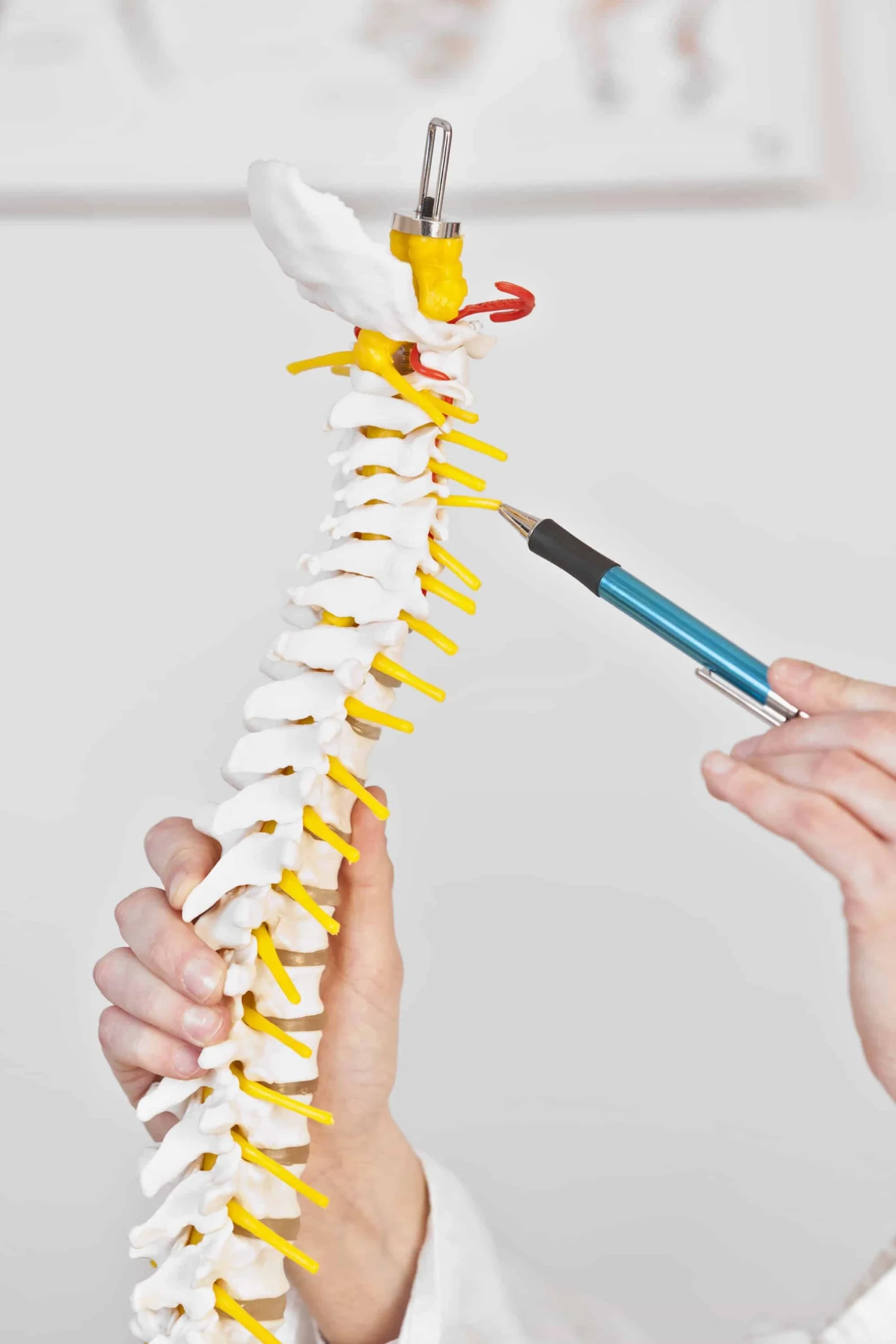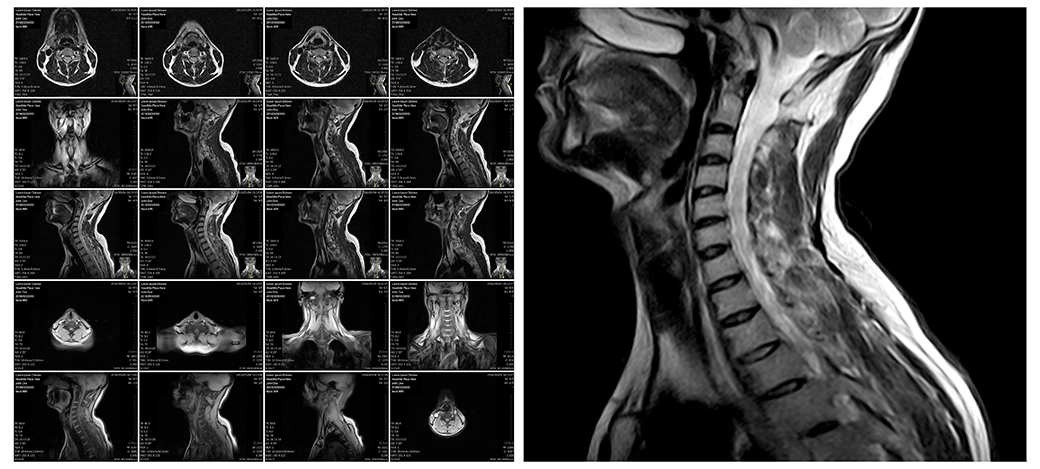Do you suffer from a burning pain that radiates into the extremities of your body? Does it come and go? You may have foraminal stenosis. Your Anchorage-based chiropractor is here to help.
The treatment for foraminal stenosis, like other spinal issues, depends on the severity of the condition. Generally, it is best to start with conservative techniques and progress as necessary. Surgery is the option of last resort. Before that, you can try things like rest, heat therapy, medication, massage therapy, chiropractic care, physical therapy, and therapeutic injections.
How do you treat severe foraminal stenosis? Let’s look at each of these in turn.
1. Rest
Resting alone probably will not solve cases of severe foraminal stenosis, but it will likely assist in the overall treatment. Basically, when you rest, you are reducing stress and aggravation of the affected areas. This, in turn, will help reduce inflammation and pain, and that will make the problem area easier to treat.
2. Heat Therapy
Again, heat therapy is another treatment that will not be effective against severe cases of foraminal stenosis on its own. But, like rest, it can likely help as part of a larger, overall treatment plan . And this is largely for the same reason as rest.
Heat therapy consists of alternately applying cold packs and hot compresses to a specific target area – realizing that in the case of foraminal stenosis the target area might not be the location of the most pain, but, rather, the site of neural compression.
Again, heat therapy is used to reduce inflammation and pain – much like rest..
3. Medication
Probably the last of the really simple things you can try to treat mild to severe foraminal stenosis is medication. Basically, painkillers. Like other areas of medicine, medications come on a scale of potency. You might want to start with the basic over-the-counter painkillers like Tylenol and progress from there. Obviously, you should only do this under the supervision of a doctor.
The one warning about medication, though, is that the really potent stuff – those medications that require a prescription from a doctor – can be addictive. You might want to try massage therapy, chiropractic care, and/or physical therapy before going the heavy-duty medication route.
4. Massage Therapy
Next up on our list is massage therapy. Again, this is an indirect method of treating the problem and usually works best in conjunction with other therapies like chiropractic care. Massage helps reduce tension, loosen muscles, and relax the body. It also helps reduce inflammation and stimulate circulation.
All of these things help with healing. Increasing blood flow provides nutrients to the problem area. And an injury that is relaxed and less-inflamed is easier to manage and heal.
5. Chiropractic Care
Chiropractic Care can also be effective against severe cases of foraminal stenosis. In many cases of foraminal stenosis, a poorly-aligned musculoskeletal system can aggravate the condition intensely. Chiropractic care can manipulate and realign the relevant bones, so that the narrow openings through which the nerves leave the spine are not compressed or pinched by a protruding bone that is somewhere it’s not supposed to be.
One study by sciencedirect.com involved a 33-year old man who was successfully treated with what is called Cox flexion distraction decompression manipulation and physiotherapy modalities. Basically, it is the combination of a chiropractic device in conjunction with physical therapy. A powerful duo.
The good thing is that at Better Health Alaska, located in Anchorage itself, we offer both chiropractic care and physical therapy to Anchorage patients to treat their stenosis.
6. Physical Therapy
Next up is good ol’ physical therapy. The benefit of physical therapy to a patient looking to treat severe foraminal stenosis is that it can help build up muscles in and around the affected areas. Remember how the chiropractor can realign posture and bone positioning? Such realignment might not last unless you develop the musculature around the relevant area.
A physical therapist can also prescribe exercise routines and various types of stretches to help address the problem. For example, in a case of sciatica involving foraminal stenosis, a good physical therapist has a number of easy stretches they can recommend.
7. Therapeutic Injections
As time goes on, technology is continually advancing and new cutting-edge treatments are appearing for conditions like severe foraminal stenosis. Therapeutic injections are just one such cutting-edge technique available here at Better Health Alaska. These minimally invasive techniques involve injecting medicines or therapeutic substances right at the area of concern.
The medicine might be designed just to relieve pain, or, depending upon the nature of the foraminal site, the substances might help rebuild cartilage, replace lubricating fluid, or what-have-you.
For example, according to Science Direct, one particular type of injection,called a cervical transforaminal epidural steroid injection, is highly effective at treating the pain caused by cervical foraminal stenosis.
8. Surgery
Last, but not least, is surgery. If your doctor deems it necessary and wise, you may have to “go under the knife.” Generally, this is reserved for the most severe cases of foraminal stenosis. Surgery is, of course, the most invasive technique available, and is generally reserved as the final option for treatment..
Anytime you “go under the knife” there are increased chances of mishap and whatnot. But if you’ve exhausted all the conservative methods above, it may be the only option left.

Your Anchorage Chiropractor Explains: What Is Foraminal Stenosis?
Foraminal stenosis is an ailment of the spine that involves the gradual closing of a hole on the side of the spine through which a nerve, other than the spinal cord itself, exits the spine. This can be caused by osteoarthritis, bone spurs, injury, or other issues.
To be treated, it must first be diagnosed by a trained medical professional. There are other spinal issues that have similar symptoms. For example, a study published at SpringerLink indicates that pain in the leg while at rest is a symptom of L5-S1 foraminal stenosis, but not lumbar intra-spinal stenosis.
Your doctor or chiropractor will be able to wade through the various symptoms you might have to get an accurate diagnosis.
Anchorage Residents Want to Know: How Effective Is Chiropractic Care On Severe Foraminal Stenosis?
Chiropractic care is quite useful when combatting spinal stenosis, so you might wonder if it is as effective against foraminal stenosis. As both issues involve the spine, you might start by asking your chiropractor a couple quick questions about spinal stenosis.
The two diseases do both affect the spine. One affects the main tunnel of the spine through which the spinal cord travels (spinal stenosis), and the other affects the exits from the spinal column through which other nerves travel (foraminal stenosis).
Although chiropractic care may, indeed, on its own, help with cases of severe foraminal stenosis, it is usually most effective when used in conjunction with other non-invasive conservative therapies, like some of those mentioned above:
- Rest
- Heat Therapy
- Medication
- Massage Therapy
- Physical Therapy
One of the most potent combinations of non-invasive therapies usually consists of chiropractic care, massage therapy, and physical therapy. Individually, they each provide some level of benefit in severe cases of foraminal stenosis, but when used in conjunction with each other, each serves to augment and amplify the benefits of the others.
Basically, massage therapy relaxes the body and muscles making it easier for a chiropractor to manipulate bones and correct misalignments and poor posture. This is then made more durable through therapy that strengthens the relevant muscles so that poor posture and alignment does not return.
So, if you are ever in the position where you must choose between physical therapy and chiropractic care, you might want to consider trying both. They play off each other quite well.
Are There Any Simple Home Remedies for Severe Foraminal Stenosis
Again, by themselves, most home remedies will likely have limited impact in treating severe cases of foraminal stenosis. However, treatments like heat therapy (mentioned above) and such, will often help when used in conjunction with other techniques like chiropractic care, etc….
Basically, you should fall back on the tried and true rule that you should exhaust the conservative therapies before progressing to advanced ones. You might start (under the supervision of a doctor, like a chiropractor here in Anchorage) a combination of rest, medications, and heat therapy, then advance to chiropractic care, massage therapy, and physical therapy, and so on.
What Other Natural Treatments for Foraminal Stenosis Are Available?
Any time you are seeking treatment for a medical problem, you should first consult a medical professional with which you have experience. That said, there are a number of other natural treatments you can look into that might help. These include:
- Changing your diet – anti-inflammatory food should help reduce inflammation and, therefore pain.
- Trying Acupuncture – acupuncture is a treatment that has long been used in Asia and is starting to be accepted here in the West. Used regularly, it can help reduce pain.
- Trying Yoga – Yoga is a system of stretching exercises that can help with a lot of physical issues. However, make sure you seek out a competent yoga teacher, if you are taking yoga up for medical reasons. Don’t do it on your own.
Of course, all this presupposes you have foraminal stenosis. But there are other back issues that can cause pain and can sometimes be confused with foraminal stenosis. We’ve mentioned spinal stenosis, but another possible cause for lower back pain is lumbago which is another condition you should ask about.
Conclusion
As you can see, there are many treatments that can assist with severe foraminal stenosis. But the absolute first step to take is to consult a medical professional – either your primary care provider or a qualified chiropractor, like you’ll find at Better Health Alaska in Anchorage.
Sources:
https://link.springer.com/article/10.1007/s00586-013-3055-3
htttps://www.sciencedirect.com/science/article/abs/pii/S0161475408001085
https://www.sciencedirect.com/science/article/abs/pii/S1878875017319332










